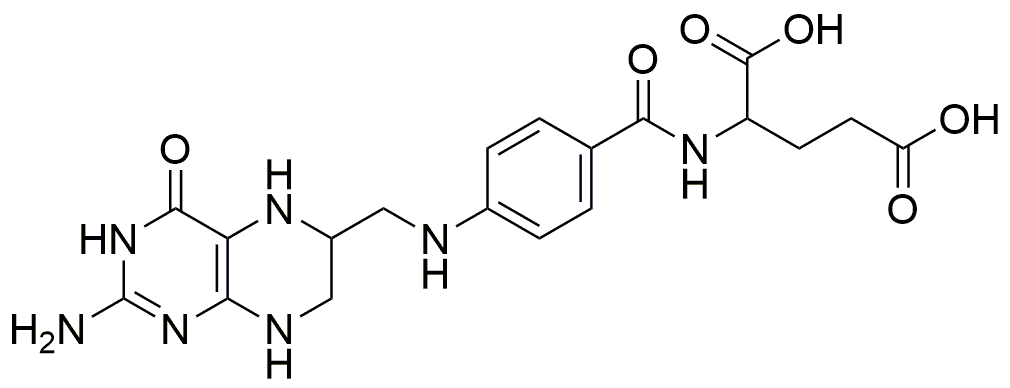Tetrahydrofolic acid is widely utilized in research focused on:
- Nutritional Supplements: It plays a crucial role in dietary supplements, particularly for pregnant women, to prevent neural tube defects in developing fetuses.
- Pharmaceutical Development: This compound is essential in the synthesis of various medications, especially those targeting folate metabolism, which is important in cancer treatment.
- Biotechnology: In genetic engineering and molecular biology, it is used as a cofactor in enzymatic reactions, facilitating the synthesis of nucleic acids and amino acids.
- Clinical Diagnostics: Tetrahydrofolic acid levels are measured in blood tests to diagnose deficiencies, which can lead to anemia and other health issues.
- Food Fortification: It is added to certain food products to enhance their nutritional value, ensuring populations receive adequate folate intake.
General Information
Properties
Safety and Regulations
Applications
Tetrahydrofolic acid is widely utilized in research focused on:
- Nutritional Supplements: It plays a crucial role in dietary supplements, particularly for pregnant women, to prevent neural tube defects in developing fetuses.
- Pharmaceutical Development: This compound is essential in the synthesis of various medications, especially those targeting folate metabolism, which is important in cancer treatment.
- Biotechnology: In genetic engineering and molecular biology, it is used as a cofactor in enzymatic reactions, facilitating the synthesis of nucleic acids and amino acids.
- Clinical Diagnostics: Tetrahydrofolic acid levels are measured in blood tests to diagnose deficiencies, which can lead to anemia and other health issues.
- Food Fortification: It is added to certain food products to enhance their nutritional value, ensuring populations receive adequate folate intake.
Documents
Safety Data Sheets (SDS)
The SDS provides comprehensive safety information on handling, storage, and disposal of the product.
Product Specification (PS)
The PS provides a comprehensive breakdown of the product’s properties, including chemical composition, physical state, purity, and storage requirements. It also details acceptable quality ranges and the product's intended applications.
Certificates of Analysis (COA)
Search for Certificates of Analysis (COA) by entering the products Lot Number. Lot and Batch Numbers can be found on a product’s label following the words ‘Lot’ or ‘Batch’.
*Catalog Number
*Lot Number
Certificates Of Origin (COO)
This COO confirms the country where the product was manufactured, and also details the materials and components used in it and whether it is derived from natural, synthetic, or other specific sources. This certificate may be required for customs, trade, and regulatory compliance.
*Catalog Number
*Lot Number
Safety Data Sheets (SDS)
The SDS provides comprehensive safety information on handling, storage, and disposal of the product.
DownloadProduct Specification (PS)
The PS provides a comprehensive breakdown of the product’s properties, including chemical composition, physical state, purity, and storage requirements. It also details acceptable quality ranges and the product's intended applications.
DownloadCertificates of Analysis (COA)
Search for Certificates of Analysis (COA) by entering the products Lot Number. Lot and Batch Numbers can be found on a product’s label following the words ‘Lot’ or ‘Batch’.
*Catalog Number
*Lot Number
Certificates Of Origin (COO)
This COO confirms the country where the product was manufactured, and also details the materials and components used in it and whether it is derived from natural, synthetic, or other specific sources. This certificate may be required for customs, trade, and regulatory compliance.

